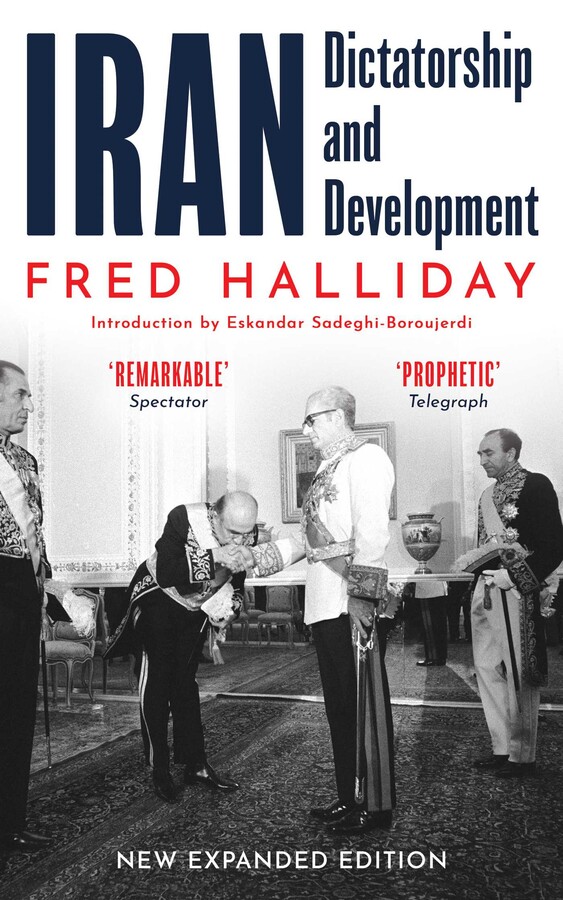Plus, receive recommendations and exclusive offers on all of your favorite books and authors from Simon & Schuster.
LIST PRICE $24.95
Free shipping when you spend $40. Terms apply.
Buy from Other Retailers
Table of Contents
About The Book
Originally completed mere months before the Iranian Revolution of 1979, Fred Halliday’s study of twentieth-century Iran was not only incredibly timely but a deeply researched, thought-provoking work. It masterfully surveys the country’s uneven capitalist development, state-building and class structure, security and military apparatus, dissent and opposition movements, and foreign relations. Even decades later it remains among the most sophisticated and compelling analyses of this period of Iranian history. Halliday persuasively argues against crude interpretations of the Pahlavi regime as an enlightened and modernising monarchy or merely a dependent client state. Instead, he contends that to make sense of the Pahlavi regime and its vulnerabilities, it is crucial to understand the dialectic of dictatorship, development and the imperial geopolitics of the global Cold War.
This new edition also includes six of Halliday’s essays on the Islamic Republic, demonstrating how his thinking on Iran and the revolution evolved over time.
Product Details
- Publisher: Oneworld Academic (August 13, 2024)
- Length: 400 pages
- ISBN13: 9780861546770
Browse Related Books
Raves and Reviews
‘It is impossible to exaggerate the significance of Halliday’s magisterial study for an entire generation of students of Iranian social and political history. Today it stands as a landmark of the particularly crucial decades between the US–UK coup of 1953 and the collapse of the Pahlavi dynasty in 1977–9.’
– Hamid Dabashi, Hagop Kevorkian Professor of Iranian Studies and Comparative Literature, Columbia University
‘This new edition...with Sadeghi-Boroujerdi’s thoughtful introduction is essential reading for anyone interested in understanding Pahlavi-era Iran on its own terms and not merely as the background to the 1979 revolution.’
– Naghmeh Sohrabi, Charles (Corky) Goodman Professor of Middle East History, Brandeis University
‘That Halliday did not predict the revolution, or its Islamic turn, does not diminish the import of his contribution. Published here along with the original text, Halliday’s writings on post-revolutionary Iran show he quickly recognized the Islamic Republic’s repressive character and gave us insightful commentary on it to the end of his life. Masterfully introduced and elucidated by Eskandar Sadeghi-Boroujerdi, this new edition revives an indispensable text of the Iranian Revolution and a landmark of leftist intellectual history.’
– Afshin Matin-Asgari, Professor of History, California State University, Los Angeles
‘Remarkable...almost miraculously timely...a carefully written, well-researched and deeply serious account of modern Iran.’
– Spectator
‘Well-timed and prophetic...thoroughly researched.’
– Telegraph
‘Much original analysis and relevant information not previously gathered together in any one book.’
– Tribune
‘One of the most important scholars of his generation.’
– Millennium: Journal of International Studies
‘Present[s] a rigorous and comprehensive analysis of Iranian society in the 1960s and 1970s… Halliday’s volume is a most welcome addition to the literature. Written on the very eve of the revolution in 1978 (except for an appended twelve-page “Afterword” dated March 1979), Iran: Dictatorship and Development is a significant contribution toward an understanding of the ancien régime and also provides some insights into the causes of the revolution.’
– Iranian Studies
‘Halliday provides us both with a framework for understanding [the revolution] in Iran, and an acute insight into the social forces in struggle. His array of sources is impressive, including not only secondary works but a wide and significant range of first-hand interviews and accounts.’
– Race & Class
‘Published almost simultaneously with the climax of [the Iranian Revolution]…the second edition includes the added bonus of an account of the rebellion and its aftermath. Halliday’s book not only fills a gap in the serious literature…but provides a valuable analysis of the nature of the Pahlavi state and the roots of its instability.’
– Third World Quarterly
Resources and Downloads
High Resolution Images
- Book Cover Image (jpg): Iran Trade Paperback 9780861546770











